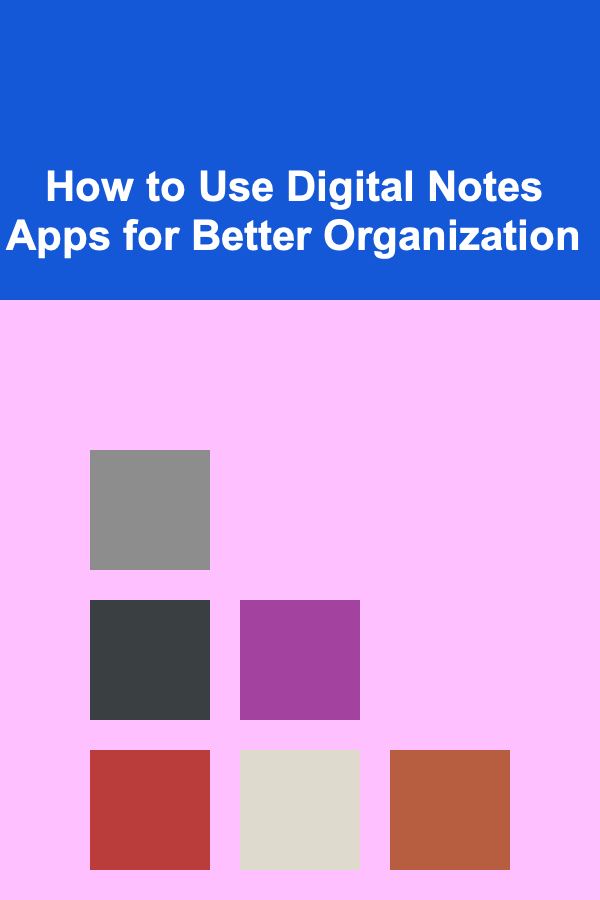
How to Use Free Design Resources Wisely
ebook include PDF & Audio bundle (Micro Guide)
$12.99$9.99
Limited Time Offer! Order within the next:

In today's digital landscape, design plays a pivotal role in creating impactful visuals for websites, marketing campaigns, apps, and more. However, not every business or individual has the budget to hire professional designers or purchase expensive design resources. Luckily, there is a wealth of free design resources available online. From free fonts and templates to stock photos and icons, these resources can be a game-changer for small businesses, freelancers, and anyone looking to enhance their design game without breaking the bank.
While these free resources can save money, it's crucial to use them wisely to maintain quality, originality, and consistency in your work. In this article, we'll explore how to leverage free design resources effectively and maximize their value.
Understanding Free Design Resources
Free design resources come in many forms and serve various purposes. Some are open-source, while others are free for personal use but require a license for commercial projects. Here are some of the most common types of free design resources:
- Stock Photos: Websites like Unsplash and Pexels offer free high-quality stock images that can be used for personal and commercial purposes.
- Fonts: Free fonts can be found on platforms like Google Fonts or Font Squirrel, which allow designers to use them in their projects without cost.
- Icons: Free icon sets are often provided by design communities or platforms like Flaticon, which can be used to enhance visual appeal.
- Templates: Free templates for websites, presentations, brochures, and other types of documents are available on platforms like Canva, Google Docs, or Envato Elements.
- Vectors and Illustrations: Free vector graphics and illustrations are accessible from sites like Vecteezy and Freepik.
- Design Tools: Several free design tools, such as GIMP, Figma, and Inkscape, can be used for creating and editing visuals without the need for expensive software.
While these resources are incredibly helpful, they come with their own set of challenges. When using free design resources, it's essential to be mindful of issues like copyright, consistency, quality, and the risk of using the same assets as countless others. Now, let's explore how to make the most of these free resources.
Know the Legal Boundaries
The first rule when using free design resources is to be clear about the licensing terms. Not all free resources are created equal, and some have restrictions that could result in legal issues down the line. Before downloading and using free assets, make sure you:
- Check the License: Many free resources come with specific usage licenses. Some are free for personal use only, while others allow commercial use. Be sure to read the license and understand the scope of use.
- Give Credit: Some free resources require attribution. If the license specifies that you must credit the creator, make sure to do so appropriately. This can be done by including a small note or link on your website or in your project.
- Avoid Exclusive Use: Even if a resource is free, there's no guarantee that it won't be used by others. Some free resources may be offered to many users, which can lead to overuse and a lack of originality.
To avoid potential legal headaches, it's always a good idea to check the terms of use, and if you're unsure, consider using resources that explicitly offer a more permissive license for commercial work, such as those labeled "CC0" (Creative Commons Zero).
Prioritize Quality Over Quantity
It's easy to get overwhelmed by the vast amount of free design resources available on the web. However, it's important to remember that not all free assets are high quality. A resource may be free, but if it's poorly designed, it can undermine the overall quality of your project.
Here's how to ensure you're selecting high-quality resources:
- Evaluate the Resource Carefully: Take the time to assess the quality of the resource. For fonts, check the legibility and uniqueness. For stock photos, ensure they have high resolution and match the tone of your brand. For icons, consider whether they're easily recognizable and adaptable to various sizes.
- Limit the Number of Resources: Using too many free assets can make your design look cluttered or inconsistent. Instead of downloading hundreds of resources, focus on a few high-quality ones that truly add value to your design.
- Invest Time in Customization: Free resources are often generic, so take the time to customize them to suit your project's unique needs. This could involve adjusting colors, fonts, or layouts to better align with your brand or vision. This customization ensures that your design feels personal and distinctive.
By prioritizing quality over quantity, you ensure that your design remains professional and visually appealing, regardless of whether you used paid or free resources.
Maintain Consistency Across Assets
When working with free design resources, it's crucial to maintain consistency. The biggest challenge with free assets is that they are often used by other designers, which can lead to a lack of originality. To combat this and keep your designs consistent, consider the following tips:
- Stick to a Limited Color Palette: Using a cohesive color palette across your assets is key to maintaining consistency. Even if you're using different types of free resources (fonts, photos, icons), choose colors that complement each other and reinforce your brand's identity.
- Use a Design System: A design system can help ensure consistency across various materials. This system could include a set of design rules for fonts, color schemes, spacing, and logos. If you're using free templates, try to modify them to fit within your established design system.
- Choose Resources from the Same Source: If you're using free resources like icons or vectors, try to source them from the same website or designer. This can help ensure that the assets are visually consistent and share the same style.
By sticking to these principles, you can use free resources without sacrificing your brand's identity or professionalism.
Customize Your Resources to Make Them Unique
One of the downsides of free design resources is that many people may use the same assets, resulting in a lack of originality. To ensure your designs stand out, it's important to customize your free resources.
Here are a few ways you can make free design assets your own:
- Change Colors: Adjust the color palette of free fonts, templates, or icons to match your brand's colors. This small tweak can make a big difference in making an asset look unique.
- Modify Shapes and Layouts: If you're using a free template, consider changing the layout or adding your own creative spin to it. This could involve moving elements around, adding new ones, or changing the typography.
- Combine Multiple Resources: Don't be afraid to mix and match different free assets. For example, you could combine a free stock photo with custom text or overlay it with your own illustrations to create something original.
- Create Your Own Custom Graphics: Use free tools like Canva or Figma to create your own illustrations, icons, or backgrounds. This ensures that your designs are entirely unique and tailored to your specific needs.
By customizing free resources, you can make them feel like your own creations and give them a distinct identity.
Use Free Tools for Professional Results
Many free design tools can help you make the most of your free resources. These tools offer powerful features that can help you edit and enhance the resources you download, resulting in polished, professional-looking designs.
- Canva: Canva is a popular design tool that provides free access to a wide range of templates, stock photos, fonts, and icons. You can use it to create social media graphics, presentations, posters, and more.
- Figma: Figma is a free, browser-based design tool that's perfect for collaborative work. It's ideal for creating wireframes, UI designs, and prototypes.
- GIMP: GIMP is a free alternative to Photoshop, offering a variety of tools for photo editing and graphic design. It's perfect for users who want more control over their images and layouts.
By learning to use these tools effectively, you can turn free resources into professional-quality designs.
Combine Free Resources with Paid Resources
While free resources are fantastic, sometimes you may need something more specific or high-quality than what's available for free. In such cases, consider combining free resources with a few paid assets. This balance allows you to stretch your budget while still achieving top-notch results.
For instance, you can use a free stock photo as the base of your design and then purchase a high-quality premium font or icon to add a touch of sophistication. This approach ensures that you can still stay within budget while achieving the desired outcome.
Be Mindful of Overuse and Redundancy
A common pitfall when using free design resources is the tendency to overuse certain assets. Since many free resources are available to anyone, they may appear in multiple projects across the web. To avoid your design feeling overused, limit the number of times you use the same resources, and mix them with custom elements or paid assets.
Additionally, it's a good idea to keep an eye on design trends. If a particular icon or stock photo becomes overly popular, it might be worth moving on to a different resource to maintain freshness in your work.
Conclusion
Free design resources are a valuable tool for anyone looking to create high-quality visuals without breaking the bank. However, it's essential to use them wisely. By understanding licensing, prioritizing quality, maintaining consistency, customizing your resources, and using free tools effectively, you can create professional, unique designs that stand out. By combining free and paid assets, customizing your selections, and avoiding overuse, you'll ensure that your designs maintain originality and align with your brand's identity.
With these strategies in place, you can take full advantage of the wealth of free resources available and elevate your design projects to new heights.
Reading More From Our Other Websites
- [Small Business 101] Small Business Marketing Plan: How to Effectively Target Your Ideal Customers
- [Stamp Making Tip 101] Eraser Stamp Projects: Tips, Tricks, and Design Ideas
- [Personal Finance Management 101] How to Integrate the 50/30/20 Budget Rule with Your Debt Repayment Plan for Faster Freedom
- [Home Budget 101] The Ultimate Guide to Creating a Household Budget That Actually Works
- [Organization Tip 101] How to Organize Children's Books for Easy Access
- [Personal Financial Planning 101] How to Deal with Debt Collectors: Protecting Your Rights and Finances
- [Organization Tip 101] How to Use Command Hooks for Creative Storage Solutions
- [Home Storage Solution 101] How to Use Baskets and Bins for a Tidy and Functional Storage System
- [Small Business 101] Effective Business Growth Strategies for Small Businesses on a Budget
- [Home Holiday Decoration 101] How to Create a Holiday Playlist for the Perfect Atmosphere

Enhancing Supply Chain Management Through Transportation Coordination
Read More
How to Handle Short-Term Rentals (e.g., Airbnb) Effectively
Read More
How to Host a Family Virtual Game Night with Relatives
Read More
How to Manage and Track Your Investment Portfolio Effectively
Read More
How to Soundproof a Shared Wall in a Townhouse or Condo
Read More
How to Use Digital Notes Apps for Better Organization
Read MoreOther Products

Enhancing Supply Chain Management Through Transportation Coordination
Read More
How to Handle Short-Term Rentals (e.g., Airbnb) Effectively
Read More
How to Host a Family Virtual Game Night with Relatives
Read More
How to Manage and Track Your Investment Portfolio Effectively
Read More
How to Soundproof a Shared Wall in a Townhouse or Condo
Read More